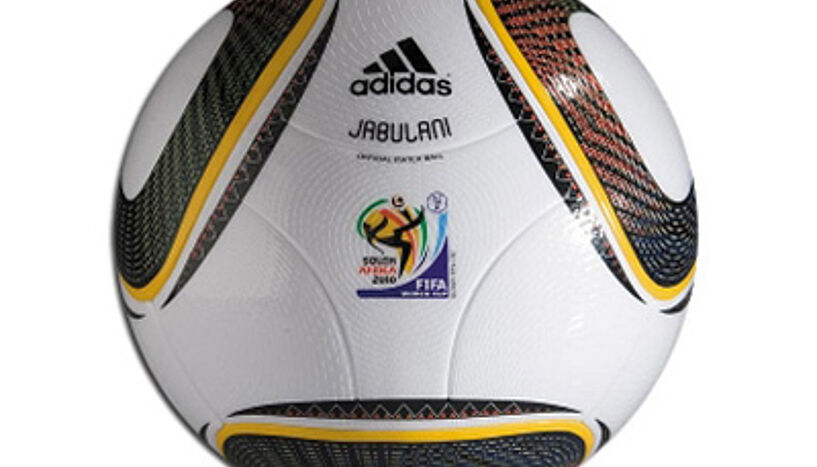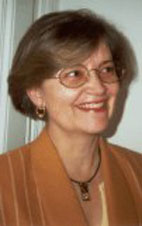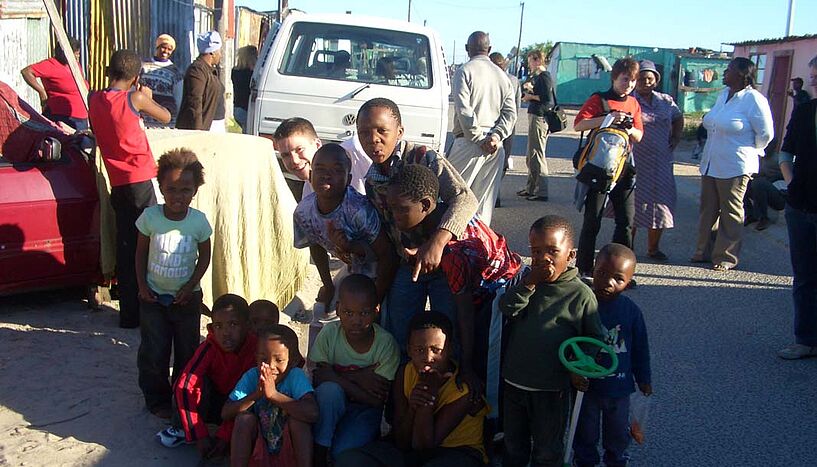"Linguistic Babylon" in South Africa (part 1)
| 07. Mai 2010
The scope of multilingualism at the grassroots level in South Africa is impressive. Most people can speak or understand more than one language.
"Jabulani" - the Zulu word for "to celebrate" - is the name of the official match ball designed for the World Championship 2010 in South Africa. The ball features eleven different colours representing not only the eleven players in every team and the number of South African provinces, but also the eleven official languages spoken in South Africa. In part one of her two-part guest article, Catharina Elizabetha Loader of the Department of European and Comparative Literature and Language Studies shows how this "Babylon of languages" affects life in South Africa.
The country's Constitution guarantees equal status to eleven official languages: Afrikaans, English, IsiNdebele, IsiXhosa, IsiZulu, Sepedi, Sesotho, Setswana, SiSwati, Tshivenda and Xitsonga. As if so many tongues were not enough, one also comes across languages that are not officially recognised by the constitution but very present in the language scenario of the country, for instance Khoi, Nama and San as well as Arabic, German, Greek, Gujarati, Hebrew, Hindi, Portuguese, Tamil, Telegu and Urdu. There are also a number of indigenous creoles and pidgins. Fanagalo represents such a mixture of languages, originating from an attempt of mineworkers to understand each other.
The official languages of South Africa can be divided into two dominant groups. One is African Bantu languages spoken by groups of Bantu ancestry. The other group consists of languages that are mainly the inheritance of the colonization of the country, spoken by groups like the English, Afrikaners, Portuguese, Germans and Indians.
Colonialisation and its impact on language
With the arrival of the Dutch, British and other immigrants in the Cape Colony the Western language groups were introduced to Southern Africa. Dutch officials were also responsible for bringing slaves from their Asian colonies to the Cape settlement and this group of people brought with them their Malay language and culture. The interaction between these different groups thrown together in the Cape region transformed the use of Dutch very quickly into what today is the youngest Germanic language of the world: Afrikaans.
| Catharina Loader about the Football World Cup 2010: | ||
 | Are you interested in football? I don't know much about football, but I'll definitely learn more about it during the World Cup. Are you going to follow the matches? What would be you dream final? |
Britain dominated South Africa from the time of the Napoleonic wars to the establishment of the Republic of South Africa in 1961. For more than 150 years, they put great emphasis on anglicizing the indigenous people of the country. Professor W.A.M. Carstens of the North-West University, South Africa, emphasizes the fact that despite the perception of English as prestige language, the percentage of people who speak it as a mother tongue decreased from 8,6 to 8,2 percent, according to the 2001 census statistics. Only as a second or third language, English is increasing. The mother tongue most spoken is Zulu, followed by Xhosa, Afrikaans and Sepedi. English shares the fifth position with Setswana.
Multilingualism in daily life
The scope of multilingualism at the grassroots level in South Africa is impressive. Most people can speak or understand more than one language. This is the result of heritage as well as the inevitable consequence of constant contact between the different groups who live and work together in one society where globalization also plays a part. Carstens moreover highlights the trans-provincial character of indigenous languages by pointing out that several indigenous languages are spoken across provincial borders and regions in South Africa. These languages are shared by speech communities from different provinces across the country.
Language and stigmatisation
Unfortunately some of the languages in South Africa became strongly stigmatised. English was first associated with colonialism and later with the atrocities of the concentration camps during the Anglo-Boer war from 1899 to 1902, which led to the death of tens of thousands of women, children and old people. During the development of Apartheid this stigma was transferred to Afrikaans (more about this process in part 2).
Tsotsis were made famous by the prize-winning film referring to them in its title. In the film the gangsters spoke "Tsotsi taal", an amalgam of Afrikaans, English and a number of African languages. This dialect is widely spoken in urban areas. The word "tsotsi" means "gangster" and "taal" is Afrikaans for "language". It is increasingly becoming associated with urban criminality.
Bantu languages are somewhat paradoxically also stigmatised in the sense that ordinary people often feel that their children can only succeed in life if they are able to speak English as the language of the globalised world. It no longer matters that English was used to colonise the speakers of these languages and their ancestors. These perceptions reduce the use of indigenous languages in several areas, for instance by limiting possibilities for publishing in these languages. It pays better to write in English.
Catharina Elizabetha Loader teaches Afrikaans language and culture at the Department of European and Comparative Literature and Language Studies. She was born in South Africa. Her mother tongue is Afrikaans.


